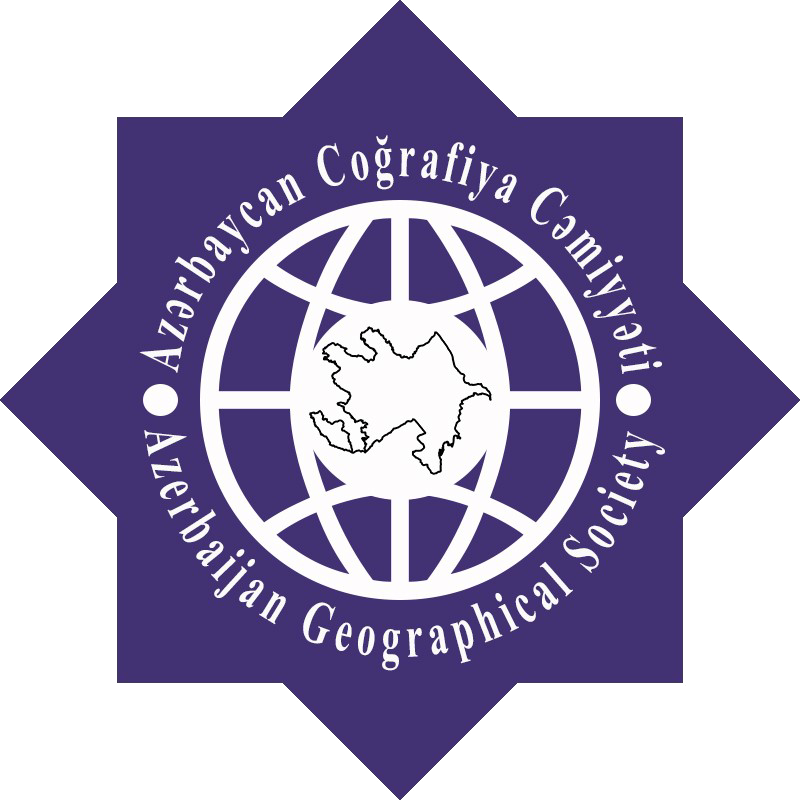DYNAMICS OF NIVAL-GLACIAL ECOSYSTEMS AND ITS EXPECTED RESULTS IN AZERBAIJAN IN THE CONDITIONS OF CLIMATE CHANGE
M.J.Ismayilov, E.A.Jabrayilov
Annotation. Glaciers over the Greater Caucasus Mountains are important freshwater resources and the source of many rivers in the region. The article examines the changes, dynamics, and expected results of the nival-glacial ecosystems of the Greater Caucasus Mountains under the conditions of modern climate change in Azerbaijan. The aim of the research is to study the spatial structure of permanent glaciers formed on mountain peaks and slopes of watersheds using different satellite data over different years and to study the sensitivity of the impact of climate change to high mountain areas. For this purpose, glacial areas were identified according to the normalized snow index using Landsat 5 and Sentinel 2 multispectral satellite imagery. According to the results of satellite imagery for different years, the total area of glaciers was 4,5 km2 in 1990, 2,41 km2 in 2006, 1,33 km2 in 2019, and 0,62 km2 in 2021. Thus, there have been identified cases of sharp reduction or complete disappearance of permanent glacial areas on the main mountain peaks. As a result, the high sensitivity of nival-glacial ecosystems to climate change has been confirmed once again.
Keywords: Greater Caucasus, nival-glacial zone, climate change, snow index, dynamics.
REFERENCES
- Azərbaycan Respublikasının Milli Atlası [Xəritə] / Bakı: Bakı Kartoqrafiya fabriki. 2014, 444 s.
- Budaqov B.Ə. Azərbaycanın Böyük Qafqaz hissəsinin müasir və qədim buzlaşmaları. Bakı, 1965, 160 s.
- İsmayılov M.C.Şərqi Qafqaz landşaftlarının formalaşmasının geofiziki xüsusiyyətləri. Azərbaycan Coğrafiya Cəmiyyətinin Əsərləri, XV cild. Bakı, 2010, s. 74–80.
- Mahmudov R.N. Azərbaycanda regional iqlim dəyişmələri və onun hidrometeoroloji şəraitə təsiri. Coğrafiya və təbii resurslar, № 2 (14), Bakı, 2021, s. 19–25.
- Da Ronco P., Avanzi F., De Michele C., Notarnicola C., & Schaefli B. Comparing MODIS snow products Collection 5 with Collection 6 over Italian Central Apennines. International journal of remote sensing, 41(11), 2020, pp. 4174–4205.
- Gruber S., Hoelzle M. and Haeberli W. Permafrost thaw and destabilization of Alpine rock walls in the hot summer of 2003. Geophysical research letters, 2004, 31(13).
- Haeberli W., Beniston M. Climate change and its impacts on glaciers and permafrost in the Alps. Ambio. Vol. 27, No. 4, pp. 1998, pp. 258–265.
- Hall D.K.; Riggs G.A.; Salomonson V.V. Development of methods for mapping global snow cover using moderate resolution imaging spectroradiometer data. Remote Sens. Environ. 54, 1995, pp. 127–140.
- Jacob T., Wahr J., Pfeffer W. T., & Swenson S. Recent contributions of glaciers and ice caps to sea level rise. Nature, 482(7386), 2012, pp. 514–518.
- Ke L., Ding X., Li W., & Qiu B. Remote sensing of glacier change in the central Qinghai-Tibet Plateau and the relationship with changing climate. Remote sensing, 9(2), 2017, 114. https://doi.org/10.3390/rs9020114.
- Łokas E., Zawierucha K., Cwanek A., Szufa K., Gaca P., Mietelski J.W., Tomankiewicz E., The sources of high airborne radioactivity in cryoconite holes from the Caucasus (Georgia). Scientific Reports. 8, 2018, 10802. https://doi.org/10.1038/s41598-018-29076-4.
- McConnell J.R., Wilson A.I., Stohl A., Arienzo M.M., Chellman N.J., Eckhardt S., Thompson E.M., Pollard A.M., Steffensen J.P., Lead pollution recorded in Greenland ice indicates European emissions tracked plagues, wars, and imperial expansion during antiquity. Proc. Natl. Acad. Sci. 115, 2018, pp. 5726–5731. https://doi.org/10.1073/pnas.1721818115.
- Meier M. F., Dyurgerov M. B., Rick U. K., O’neel S., Pfeffer W. T., Anderson R. S. & Glazovsky A. F. Glaciers dominate eustatic sea-level rise in the 21st century. Science, 317(5841), 2007, pp. 1064–1067.
- Paul F., Bolch T., Kääb A., Nagler T., Nuth C., Scharrer K., Shepherd A., Strozzi T., Ticconi F., Bhambri R. et al. The glaciers climate change initiative: Methods for creating glacier area, elevation change and velocity products. Remote Sens. Environ. 2015, 162, pp. 408–426.
- Salomonson V.V. Development of the Aqua MODIS NDSI fractional snow cover algorithm and validation results IEEE Geosci Remote S. 2006, 44(7), pp. 1747–1756.
- Salomonson V.V., & Appel I. Estimating fractional snow cover from MODIS using the normalized difference snow index. Remote sensing of environment, 89(3), 2004, pp. 351–360.
- Scherler D., Bookhagen B., Strecker M. R. Spatially variable response of Himalayan glaciers to climate change affected by debris cover. Nature geoscience. 4 (3). 2011, pp. 156–159.
- Stokes C., Popovnin V., Aleynikov A., Gurney S., & Shahgedanova M. Recent glacier retreat in the Caucasus Mountains, Russia, and associated increase in supraglacial debris cover and supra-/proglacial lake development. Annals of Glaciology, 46, 2007, 195–203. doi:10.3189/172756407782871468
- Tielidze L.G., Wheate R. D. The Greater Caucasus glacier inventory (Russia, Georgia and Azerbaijan). The Cryosphere. 12 (1). 2018, pp 81–94. https://doi.org/10.5194/tc-12-81-2018
- Uemura R., Motoyama H., Masson-Delmotte V., Jouzel J., Kawamura K., Goto-Azuma K., Fujita S., Kuramoto T., Hirabayashi M., Miyake T., Ohno H., Fujita K., Abe-Ouchi A., Iizuka Y., Horikawa S., Igarashi M., Suzuki K., Suzuki T., Fujii Y. Asynchrony between Antarctic temperature and CO2 associated with obliquity over the past 720,000 years. Nature Communications. 9. 2018. https://doi.org/10.1038/s41467-018-03328-3.
- Zemp M., Huss M., Thibert E., Eckert N., McNabb R., Huber J., … & Cogley J. G. Global glacier mass changes and their contributions to sea-level rise from 1961 to 2016. Nature, 568(7752), 2019, pp. 382–386.
- Леонтьев Л.Н. Современное и древнее оледенение в районе Шахдага (по материалам ледниковый экспедиции сектора географии АзФАН СССР в 1938 г.). Баку, 1940.
Publication Date: May 20, 2022
Download the article
